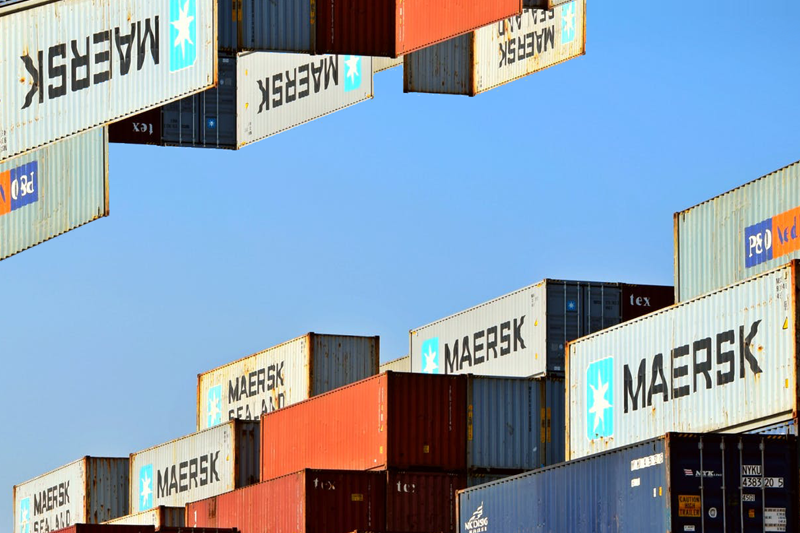
What is Kubernetes, and why are containers so popular?
Load balancer automation Published on •4 mins Last updatedLearn why containerization has exploded in popularity, along with Kubernetes – the open source platform for managing containerized workloads.
IT and business expectations have changed dramatically in recent times. Organizations across all industries are now focussing on moving their data and workloads to the cloud – either as part of digital transformation or to avoid investing in expensive infrastructure to handle their growing data demands. Consequently, there has been a significant boom in the adoption of cloud-native applications and infrastructure – leading to an enormous increase in containerization.
What is containerization?
Containerization is a major trend in software development. A form of operating system (OS) virtualization, containerization allows developers to create and deploy applications faster and more securely. It bundles up an application with its required frameworks, configuration files, and libraries together so it can be run in various computing environments – uniformly and efficiently. However, containers do not contain operating system images, which makes them more lightweight and portable.

Improved security, enhanced operational efficiency, and reduction of management costs are the main drivers for the adoption of container infrastructure software products. And research firm Gartner predicts that by 2022, more than 75% of global organizations will be running containerized applications in production, up from less than 30% in 2020. In order to manage the exponential growth of containers (ever since Docker emerged in 2013), the demand for container orchestrators – such as Kubernetes is rising.
How Kubernetes works
Kubernetes (pronounced “koo-ber-net-ees'' and abbreviated to ‘k-eights’ or ‘k8s’) is an open source software platform used to orchestrate – deploy, manage and scale – containerized applications. It automates the manual engineering effort in deploying container-based applications at scale and enables its users to span an application over thousands of servers while looking like one single unit.
Architecturally, Kubernetes is a cluster of nodes – upon which containers are deployed into pods. As it has awareness of both infrastructure and application requirements, it reduces operational complexity and is location-independent. Well-known cloud expert, Brian Gracely, Director of Product Strategy for Red Hat OpenShift said in 2018 that "the industry has generally standardized on Kubernetes". According to him, although there were multiple open source projects competing for this in the beginning, this particular technology won the battle because it is stable, can be used in a lot of different ways, and makes organizations feel comfortable while making technology investments and architectural decisions.
Google first built Kubernetes to handle the explosive workloads of the company’s massive digital platforms, but open-sourced the project in 2014 – resulting in its significant expansion of usage. Today, Kubernetes has evolved as one of the fastest-growing open source projects in history. Just like the name (Kubernetes means helmsman or pilot in ancient Greek), the portable and extensible technology provides guiding services to help navigate an ever-increasing proliferation of containers. Therefore, it’s extremely popular with organizations that utilize a DevOps approach.
Five steps: how you might use Kubernetes
- Develop an application
- Containerize the application
- Create a Kubernetes cluster
- Deploy the container to the cluster
- Expose and scale the cluster
What does Kubernetes actually do?
- By using the DNS name or IP address, Kubernetes can expose a container.
- When network traffic to a container spikes up, Kubernetes can load balance and distribute the traffic to stabilize the deployment.
- Kubernetes makes storage orchestration possible by allowing you to automatically mount a storage system of your preference, such as local storage, public cloud providers, and more.
- Kubernetes replaces containers, restarts the ones that fail, and kills those that don’t respond to user-defined health checks. Moreover, it doesn’t advertise them to clients until they are ready to serve.
- Kubernetes facilitates secrets – objects that contain a small amount of sensitive data – allowing you to store and manage sensitive information, such as SSH keys, passwords, and OAuth tokens.
- If you describe the desired state for your deployed containers, Kubernetes can change the actual state to the desired state at a controlled rate. You can automate Kubernetes to set up new containers for deployment, remove existing containers and adopt all their resources to the new container.
- Kubernetes can fit containers onto your nodes to make the best use of your resources if you provide it with a cluster of nodes that it can use to run containerized tasks and tell it how much memory (RAM) and CPU each container needs.
Should organizations use Kubernetes?
Well, worldwide container management revenue is expected to grow strongly in the next few years – increasing from $465.8 million in 2020 to reach $944 million in 2024. That said, containerized-applications do not necessarily need Kubernetes to run. But, using Kubernetes provides a centralized control plane which eliminates the need to individually manage containers and the associated infrastructure services – thus, making the process quick and simple.
As modern applications can comprise tens or hundreds of containers, the challenge of scaling without an orchestrator becomes evident. Therefore, Kubernetes offers great value for DevOps and IT Operations teams – enabling them to maintain a common and consistent environment throughout an application's lifecycle.
Besides, Kubernetes also provides application portability. Containerized applications can run on any Kubernetes platform, either in an on-premises data center, at the edge, or in public clouds, making it easier for users to choose the best environment to run an application depending on their business needs.
Some of the most popular alternatives to Kubernetes are Mirantis Kubernetes Engine (formerly Docker Universal Control Plane), Amazon Elastic Container Service (Amazon ECS), Google Kubernetes Engine (GKE), Azure Container Instances, Red Hat OpenShift Container Platform, and IBM Cloud Kubernetes Service.
Confused? Talk to us if you're still navigating which environment is best for your organization's requirements.
